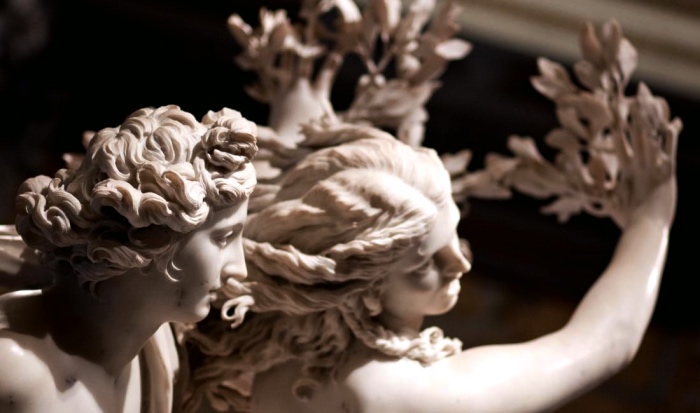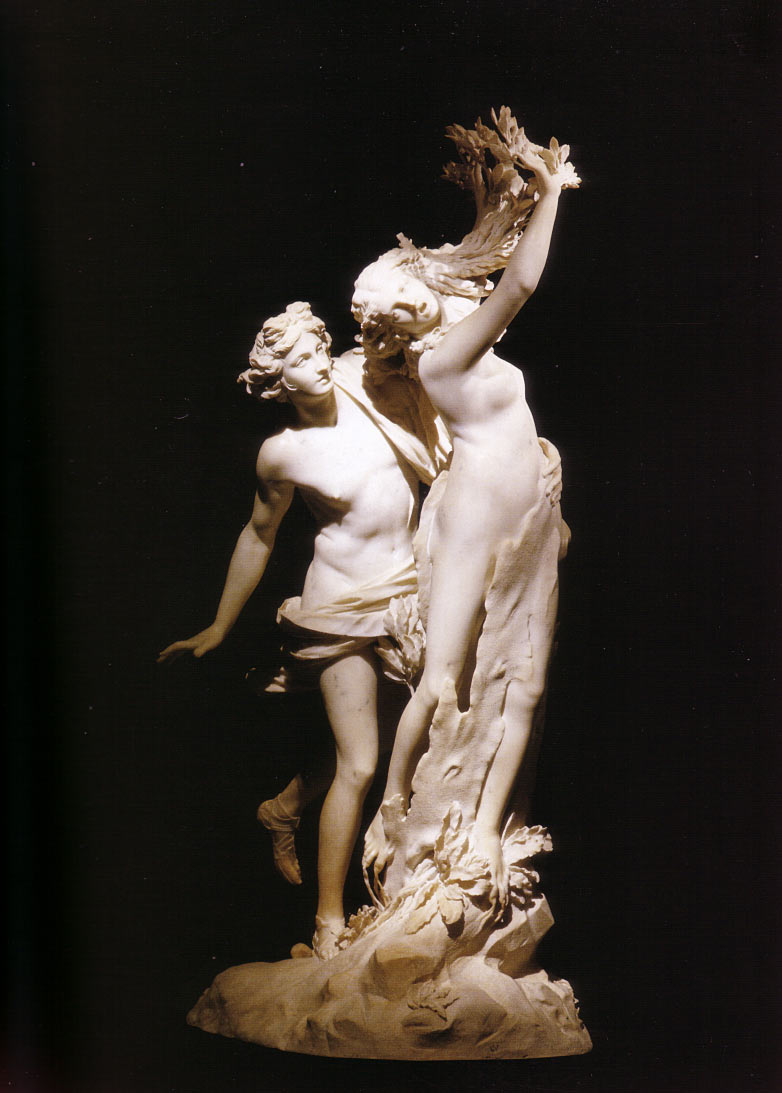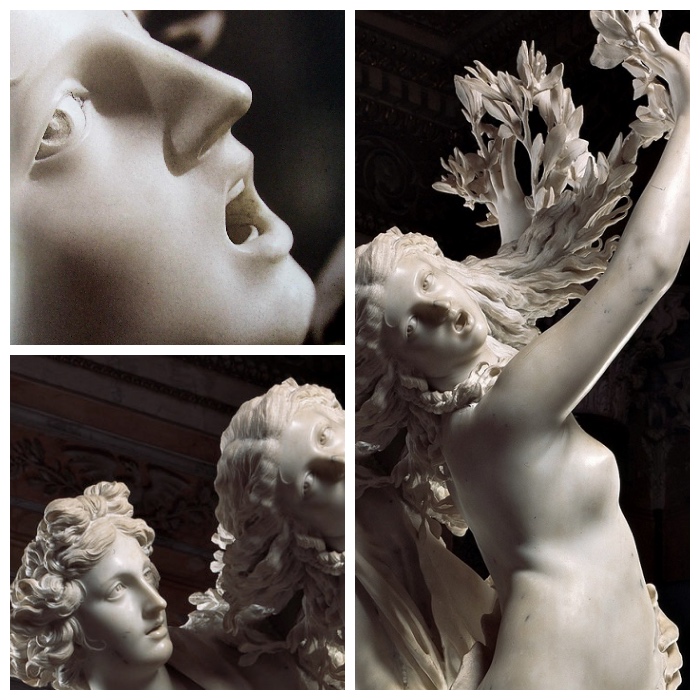
APOLLO AND DAPHNE BY GIAN LORENZO BERNINI: 5 THINGS TO KNOW
How many times have you looked Apollo and Daphne by Bernini for endless minutes?
It often happens to me, and when I stayed before this amazing sculpture I couldn’t help but turn around it to observe it from all angles!
In this post I encourage you to discover one of the masterpieces by Gian Lorenzo Bernini, and I bet you’ll feel the desire to enter immediately the museum housing Apollo and Daphne.
Apollo and Daphne: 5 things you need to know

Apollo and Daphne by Bernini
1. THE MYTH OF APOLLO AND DAPHNE
The myth of Apollo and Daphne is told by Ovid in his book entitled the “Metamorphoses”.
According to the tale written by the Latin poet, Apollo had bragged that he could use bow and arrows better than anyone, causing Cupid’s anger, who, in revenge, shot him with one of his arrows, making him fall in love with the nymph Daphne.
Daphne tried to reject Apollo in every way and, because she couldn’t escape the god, asked the goddess Artemis (Diana) for help, who turned her into a laurel tree.
Apollo had to witness powerless the girl’s transformation and from that moment onwards, the laurel was considered sacred to the god.
2. WHERE APOLLO AND DAPHNE BY BERNINI IS HOUSED
Apollo and Daphne is housed in Rome at the Borghese Gallery.
It’s one of the unmissable works of art housed in one of the most beautiful museums in Rome, as far I’m concerned.
To admire the sculpture you need to visit the Borghese Gallery and booking is mandatory.
For all information read the post Borghese Gallery tickets: how to book and what to see which contains all tips and useful links.
3. APOLLO AND DAPHNE: WHY BERNINI CREATED IT
Apollo and Daphne by Bernini is part of Cardinal Scipione Borghese’s ambitious project, who wanted to fill the rooms of his Roman villa with works of art inspired by ancient world or that could revive it.
Gian Lorenzo Bernini was one of Cardinal Borghese’s favourite artists, and for this reason the artist was commissioned to make four sculpture groups: Aeneas and Anchises, The Rape of Proserpina, David, Apollo and Daphne.
The result was four works in which, for the first time, life seemed to exit the marble, while bodies seemed to be real.
4. THE BEAUTY OF APOLLO AND DAPHNE BY BERNINI
Executing this sculpture Bernini decided to focus the attention on the moment of the metamorphosis.
We witness the transformation of the nymph who in order to escape Apollo has to renounce forever her body and present life.
Bernini’s ability lies in making the scene so intense that it feels like you’re hearing the scream of the girl and feeling her life fading.
5. APOLLO AND DAPHNE IN ART
The myth of Apollo and Daphne was very popular in painting and print reproductions, while sculptures were rare.
For the nymph’s movements Bernini drew inspiration from dances painted on ancient sarcophagi. For the image of Apollo, instead, it seems that Bernini drew inspiration from the famous “Apollo del Belvedere”.

READ ALSO – Borghese Gallery works: masterpieces you can’t miss

